Are private jets safe? Yes, private jets have become a popular mode of transportation for those who want to travel in style and comfort.
However, one question that is often asked is whether private jets are safe. The answer is yes, private jets are safe.
Contents
Private jet charters such as Stratos Jet Charters offer access to a vast network of private aircraft, allowing travelers to choose the safest and most reliable option for their needs.
These private jet charters provide a higher level of control over the travel experience, from choosing the departure time to selecting the onboard amenities.
Which can contribute to a safer and more comfortable journey. One important aspect of private jet safety is the takeoff and landing procedures.
Private jets have shorter runways than commercial airlines, which means they require less distance to take off and land.
This allows them to fly into smaller airports that may not be accessible by larger planes.
Additionally, private jets have powerful engines that enable them to climb faster and reach cruising altitude quicker than commercial airlines.
Another factor that contributes to the safety of private jets is maintenance requirements.
Private jets are subject to rigorous safety standards and maintenance requirements, ensuring that each aircraft is in top condition before every flight.
Stratos Jet Charters employs experienced pilots who undergo regular training and certification to maintain the highest level of safety and professionalism.
In terms of specific types of private jets, there are many options available on the market today that meet high safety standards.
Some of the safest models include Gulfstream G650ER, Bombardier Global 7500, Dassault Falcon 8X, Embraer Legacy 650E, Cessna Citation Longitude.
All designed with advanced technology features such as automatic throttle systems or enhanced situational awareness tools.
It’s also worth noting that flying on a private jet can actually be safer than flying commercially during times of heightened security concerns or health risks.
Such as pandemics because passengers can avoid crowds at commercial airports or reduce exposure when traveling to high-risk areas.

Private Jet Safety Statistics
Private jet safety is a critical consideration for individuals and organizations opting for exclusive air travel.
While private jets are often associated with luxury and convenience, their safety record is a key factor in ensuring peace of mind for passengers.
Fortunately, private jets have a strong safety track record that is continually improving. According to industry data, private jets have a significantly lower accident rate compared to commercial airlines.
The National Transportation Safety Board (NTSB) reports that private jet accidents account for a small fraction of all aviation accidents.
Moreover, private jet accidents are typically less severe in terms of fatalities and injuries, owing to the stringent safety measures implemented by private jet operators.
One of the factors contributing to private jet safety is the rigorous maintenance standards enforced by regulatory bodies such as the Federal Aviation Administration (FAA) in the United States.
Private jets undergo regular inspections and maintenance checks to ensure they meet the highest safety standards.
Additionally, private jet pilots are required to undergo comprehensive training and adhere to strict operational procedures.
Advancements in technology have also played a significant role in enhancing private jet safety.
Modern private jets are equipped with state-of-the-art avionics, navigation systems, and safety features that minimize the risk of accidents and enable pilots to make informed decisions in real-time.
Also see: Do Pilots Carry Guns?
What is the Most Dangerous Part of a Flight?
The most dangerous part of a flight can vary depending on various factors.
But statistically speaking, the takeoff and landing phases are generally considered the most critical and potentially hazardous.
During takeoff, the aircraft is operating at lower speeds and altitudes, making it more vulnerable to factors like engine failure, bird strikes, or runway incursions.
The acceleration and ascent require precise coordination between the pilot, air traffic control, and the aircraft systems.
Similarly, during landing, the aircraft descends and decelerates, which presents challenges such as gusty winds, visibility issues, and runway conditions. Nevertheless.
It’s crucial to note that the aviation industry has implemented stringent safety measures and protocols to mitigate risks throughout all phases of a flight.
Modern aircraft are equipped with advanced technology, including redundant systems, automated safety features, and rigorous maintenance procedures.
Extensive pilot training, air traffic control, and strict regulations further contribute to enhancing safety.
While the takeoff and landing phases are considered critical, the overall safety record of commercial aviation remains remarkably high, and incidents are relatively rare.

Can Private Jet Turbulence Cause Air crash?
Private jet turbulence alone is highly unlikely to cause an air crash. Turbulence is a common occurrence in aviation, including private jet flights, and is generally not a safety concern.
Modern aircraft, including private jets, are designed to withstand turbulence and maintain stability during flight.
Private jets undergo rigorous safety testing and certification processes to ensure their structural integrity and ability to handle various flight conditions.
They are equipped with advanced avionics and navigation systems that allow pilots to anticipate and avoid turbulent areas whenever possible.
However, it’s worth noting that severe turbulence can pose risks to passengers and crew, potentially leading to injuries if they are not properly secured.
Pilots are trained to monitor weather conditions and receive regular updates from air traffic control to avoid turbulent areas or find smoother altitudes.
While turbulence itself may be uncomfortable, private jet crashes are more commonly caused by factors such as human error, mechanical failures, or adverse weather conditions like thunderstorms or icing.
Therefore, the occurrence of turbulence alone is not a significant contributor to air crashes involving private jets.
How Often Do Private Airplanes Crash?
Private airplane crashes are relatively rare occurrences compared to commercial aviation incidents.
The frequency of private airplane crashes varies depending on multiple factors, including pilot experience, aircraft maintenance, and weather conditions.
According to statistical data, the accident rate for private airplanes has been decreasing over the years due to advancements in safety regulations and technology.
In the United States, which has one of the largest private aviation sectors.
The National Transportation Safety Board (NTSB) reports an average of around 1,500 general aviation accidents annually.
Including both private and corporate flights. However, it’s important to note that not all of these accidents result in fatalities or serious injuries.
When it comes to fatal accidents, private airplane crashes constitute a small percentage compared to commercial aviation disasters.
Nonetheless, any aviation accident is a matter of concern due to the potential loss of life and property.
To minimize the risk of private airplane crashes, stringent pilot training programs, adherence to safety protocols, regular aircraft maintenance.
And thorough pre-flight inspections are crucial factors. These measures play a vital role in ensuring the safety of private aviation operations.
Also see: How Long Flight Chicago to Las Vegas?
Private Jets vs Commercial Airlines: Which is Safer?
Top priority for both passengers and crew members is the safety of private jet flights.
Compared to commercial airlines, private jets offer a more personalized and exclusive experience that comes with added safety measures.
The most critical phases of a private jet flight are takeoff and landing where strict safety measures are enforced.
During takeoff, the pilot must ensure that the aircraft reaches the necessary speed required for lift-off while avoiding any obstacles on the runway.
A safe takeoff requires proper communication between the pilot and air traffic control personnel, ensuring that all guidelines and procedures are followed.
Landing is equally crucial as it requires precision timing and coordination between the pilot and ground personnel.
The pilot must carefully align the aircraft with the runway while ensuring that it lands smoothly without causing any damage to both passengers and crew members.
Regular Maintenance Checks
Private jets undergo regular maintenance checks to ensure that all safety features are functioning correctly.
This includes checking all mechanical parts of the aircraft such as engines, brakes, landing gear, avionics systems, fuel tanks, among others.
Maintenance checks also include verifying if there are any leaks or damages to various parts of an airplane.
All these checks aim to identify potential problems before they turn into significant issues during flight operations.
Extensive Pilot Training
Private jet pilots undergo extensive training and certification to ensure they have adequate skills to handle any potential safety issues.
Pilots must have a minimum number of flight hours under their belt before they can fly a private jet.
They must also pass rigorous tests on emergency procedures such as engine failures or other malfunctions.
Pilots also receive training on how to handle different weather conditions such as turbulence or icing conditions.
This ensures that pilots have adequate knowledge of how weather patterns can impact flight operations.
Comparing Private Jets vs Commercial Airlines
Commercial airlines operate larger planes than private jets which means they carry more passengers per trip than private jets do.
However, this does not necessarily mean that commercial airlines are safer than private jets.
According to the National Transportation Safety Board, there were 1.2 fatal accidents per 100,000 flight hours for private jets compared to 0.24 fatal accidents per 100,000 flight hours for commercial airlines.
The statistics also reveal that the most dangerous part of a flight is during takeoff and landing phases. This is where most accidents occur in both private jets and commercial airlines.
Also see: Which Aviation Headset is the Best?

Safety Tips for Passengers: What to Know Before Flying in a Private Jet
Private jets are equipped with advanced technology that allows them to fly above bad weather conditions, ensuring safe travel even in the midst of turbulence caused by wind and fog.
These planes are designed to handle such incidents with ease, thanks to features like advanced radar systems and sophisticated autopilot functions.
In addition, private jets have access to a wider range of airports than commercial airlines.
Which means they can often avoid bad weather altogether by landing at smaller airports that are not affected by storms or other weather-related issues.
This flexibility is another factor that contributes to the overall safety of private jet travel.
Flying in the Stratosphere Provides a Stable Environment
One of the key advantages of flying in a private jet is that these planes typically operate in the stratosphere, which is the second layer of the Earth’s atmosphere.
This layer provides a stable environment for flying, reducing the risk of incidents and ensuring a smoother ride for passengers.
The stratosphere also offers other benefits for private jet travelers.
For example, it allows these planes to fly at higher altitudes than commercial airliners, which means they can often reach their destinations more quickly and efficiently.
Additionally, because there is less air resistance at higher altitudes, private jets can fly faster and burn less fuel than other types of aircraft.
Private Jet Travel is One of the Safest Modes of Transportation
According to data from the National Transportation Safety Board (NTSB), air travel in the United States is one of the safest modes of transportation available today – and private jets are no exception.
In fact, many experts consider private jet travel to be even safer than commercial airline travel due to factors like better maintenance standards and more experienced pilots.
Of course, as with any mode of transportation, there are always risks involved when traveling by private jet.
However, by taking certain precautions – such as choosing a reputable charter company with a strong safety record.
And ensuring that all pilots are properly trained and licensed – passengers can minimize these risks and enjoy a safe, comfortable, and stress-free travel experience.
Debunking Common Myths About Private Jet Safety
Private jets have a reputation for being luxurious and exclusive, but many people are hesitant to fly on them due to concerns about safety.
However, the truth is that private jets are often safer than commercial airlines. In this section, we will debunk some common myths about private jet safety.
Lower Rate of Fatal Accidents
Contrary to popular belief, private jets have a lower rate of fatal accidents compared to commercial airlines.
According to data from the National Transportation Safety Board (NTSB), there were 1.82 fatal accidents per 100,000 flight hours for general aviation (which includes private jets) in 2019.
In contrast, scheduled passenger airlines had a rate of 0.16 fatal accidents per 100,000 flight hours in the same year.
While it’s true that private jets have a higher accident rate overall compared to commercial airlines.
Most of these accidents are non-fatal and occur during takeoff or landing.
Additionally, many private jet accidents involve smaller aircraft with fewer passengers and less advanced safety features.
Majority of Accidents Caused by Pilot Error
The majority of private jet accidents are caused by pilot error rather than mechanical failure or other factors.
This can be prevented through proper training and maintenance.
Private jet companies prioritize safety and invest heavily in advanced technology and equipment such as collision avoidance systems and weather radar to help pilots avoid potential hazards.
Rigorous Safety Inspections
Private jets undergo rigorous safety inspections and maintenance checks before each flight to ensure that they meet strict standards set by the Federal Aviation Administration (FAA).
These inspections cover everything from engine performance to structural integrity and must be performed by certified mechanics who follow detailed checklists.
Passengers Have More Control Over Their Safety
One advantage of flying on a private jet is that passengers have more control over their safety compared to commercial airlines.
They can choose the pilots and aircraft they fly with based on their experience level, safety record, and other factors.
Additionally, private jet companies often provide additional safety features such as air ambulance services and medical personnel on board.
Also see: Can Aviation Fuel Melt Steel?
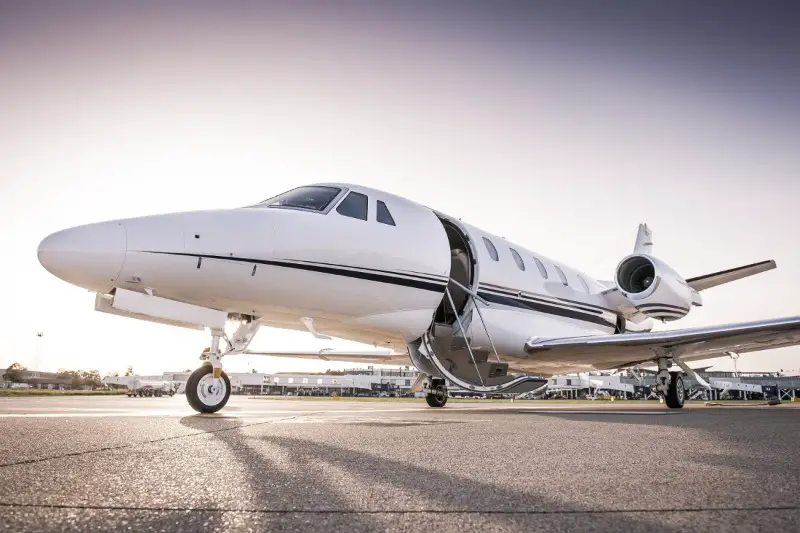
Advantages of Choosing Private Jet Charters for Safe Travel
Private jet charters have become increasingly popular in recent years as people prioritize safety and comfort while traveling.
Stratos Jet Charters is one of the leading private jet charter companies that offers a wide range of services to meet the needs of their clients.
In this section, we will discuss the advantages of choosing private jet charters for safe travel.
Rigorous Safety Checks
Stratos Jet Charters conducts rigorous safety checks to ensure the safety of their passengers.
The company adheres to national transportation safety board regulations and conducts regular maintenance checks on all their aircraft.
Additionally, pilots undergo extensive training to ensure they are equipped with the necessary skills and knowledge to operate the aircraft safely.
Third-Party Safety Checks
To further verify their safety standards, independent companies conduct third-party safety checks on private jet services like Stratos Jet Charters.
These checks help identify any potential issues or areas for improvement, ensuring that all safety measures are up-to-date and effective.
Insurance Company Safety Checks
Insurance companies also conduct safety checks before providing coverage for private jet companies.
This additional layer of scrutiny ensures that private jet charters meet strict safety standards and have adequate measures in place to protect their passengers.
Prioritizing Safety
Private jet companies understand the importance of prioritizing safety as a key aspect of their services.
At Stratos Jet Charters, they take pride in providing a safe and secure environment for their passengers.
From pre-flight inspections to onboard procedures, every step is taken to ensure that passengers can relax and enjoy a worry-free journey.
Third-Party Safety Checks: Ensuring Safety Standards
Emergency preparedness is a crucial aspect of private jet travel. Private jet companies have rigorous safety measures in place to ensure the safety of passengers in case of emergencies.
These measures include third-party safety checks, which help ensure that private jets meet national transportation safety board standards.
One important aspect of these safety checks is mechanical inspections.
Private jet companies must perform regular checks on their aircraft to ensure that all systems are functioning properly and that there are no potential issues that could compromise passenger safety.
These checks include everything from engine performance to avionics systems and must be performed by certified professionals.
In addition to mechanical inspections, private jet companies also rely on third-party services for other types of safety checks.
For example, many private jet companies work with insurance providers to ensure that they have adequate coverage in case of accidents or other incidents.
Insurance providers will often conduct their own inspections before issuing policies, which can help identify any potential risks or hazards.
Private jet companies also work closely with local authorities and emergency services to ensure a coordinated response in case of emergencies.
This includes developing emergency plans and protocols for different scenarios, such as medical emergencies or security threats.
Crew members are trained extensively on these procedures and are equipped with the necessary tools and resources to handle emergency situations.
All of these measures help ensure the safety of passengers during private jet travel. However, it’s important to note that accidents can still occur despite strict protocols and procedures being in place.
In these cases, private jet companies will cooperate fully with investigators from agencies such as the National Transportation Safety Board (NTSB).
To determine the cause of the accident and make any necessary improvements to their protocols or procedures.
Also see: How Safe are Private Jets?

The Role of Technology in Enhancing Safety in Private Jet Aviation
Private jet aviation has come a long way in terms of safety. One major reason for this is due to the advanced avionics systems that have been developed over the years.
These systems provide real-time weather updates and traffic alerts. Which helps pilots make informed decisions about their flight paths.
The technology used in these systems is constantly evolving, with new advancements being made every year.
For example, some of the latest avionics systems are equipped with predictive analytics that can anticipate potential problems before they occur.
This allows pilots to take preventative measures and avoid any potential safety hazards.
State-of-the-Art Autopilot Technology
Another area where technology has greatly enhanced safety in private jet aviation is through state-of-the-art autopilot technology.
This technology can automatically adjust to changing flight conditions, such as turbulence or sudden changes in altitude.
In addition to providing a smoother ride for passengers, this technology also reduces pilot workload and fatigue, allowing them to focus on other important tasks during the flight.
Furthermore, autopilot technology can help prevent accidents caused by human error by taking over control when necessary.
High-Quality Materials Used in Construction
The use of high-quality materials in the construction of private jets is another factor that contributes to their safety.
Fire-resistant composites and advanced alloys are just two examples of materials that are commonly used in private jet manufacturing.
These materials not only improve the overall strength and durability of the aircraft but also reduce the risk of fire hazards during flight.
Additionally, manufacturers conduct rigorous testing on these materials to ensure they meet strict safety standards set by regulatory agencies such as the FAA.
Rigorous Safety Inspections and Maintenance Procedures
Finally, it’s worth noting that rigorous safety inspections and maintenance procedures mandated by regulatory agencies such as the FAA.
Play a crucial role in ensuring private jet aviation remains safe for passengers and crew members alike.
These inspections cover everything from engine performance to structural integrity and are conducted on a regular basis to ensure that private jets are always in top condition.
Furthermore, maintenance procedures are also put in place to address any issues that arise during these inspections promptly.

High-Quality Inspections: Flying at Higher Altitudes
Safety should be your top priority. One of the most important things you can do is research the private jet company before booking a flight.
Look for information on their safety record, including any accidents or incidents they may have had in the past.
You can also check if they have any certifications or awards for safety.
It’s important to note that not all private jet companies are created equal you can ensure that you’re choosing a reputable and safe option.
Make Sure the Private Jet Has Undergone Regular Maintenance and Inspections
Another crucial aspect of flying at higher altitudes safely is ensuring that the private jet has undergone regular maintenance and inspections.
This includes routine checks on everything from engines to avionics systems to ensure that everything is functioning properly.
Before boarding your flight, ask about when the last maintenance check was performed and what kind of inspections are done regularly.
A reputable private jet company will have no problem providing this information and should be transparent about their maintenance practices.
Familiarize Yourself with Emergency Procedures and Safety Equipment On Board
In case of an emergency while flying at higher altitudes, it’s essential to know what to do.
Familiarize yourself with emergency procedures before takeoff, such as how to use oxygen masks or life vests if necessary.
You should also take note of where emergency exits are located on board and follow all instructions from flight crew members during takeoff, landing, or turbulence.
Additionally, make sure you know where safety equipment like first aid kits are located on board in case of any medical emergencies during your flight.
Follow All Instructions from Flight Crew Members
Following instructions from flight crew members is critical in ensuring a safe flight experience while flying at higher altitudes.
This includes wearing your seatbelt during takeoff, landing, and turbulence, as well as following any instructions given by the pilot or flight attendants.
If you have any questions or concerns about safety procedures on board, don’t hesitate to ask a crew member for clarification.
They are there to ensure your safety and comfort during the flight.
Avoid Bringing Hazardous Materials On Board
Finally, it’s important to avoid bringing hazardous materials on board private jets when flying at higher altitudes.
These can include flammable items like fireworks or explosives that could pose a safety risk if not handled properly.
Before packing for your flight, check with the private jet company about what items are prohibited on board.
By doing so, you can help ensure a safe and enjoyable flight experience for everyone on board.
Also see: What is the Alphabet Used in Aviation?
Fewer Passengers & Lighter Flights: Increased Safety Measures
Private jets have come a long way in terms of safety, thanks to advanced avionics systems that provide pilots with real-time data on weather, terrain, and other critical factors.
These systems allow pilots to make informed decisions about flight routes and adjust their plans accordingly.
With the use of satellite-based navigation systems, pilots can easily navigate through challenging weather conditions and avoid potential hazards.
With fewer passengers on board, private jets experience less turbulence than commercial flights.
This means that private jet passengers can enjoy a smoother ride and reach their destination faster.
In addition to this, private jet manufacturers are investing heavily in research and development to create new safety technologies such as collision avoidance systems and advanced cockpit displays.
Strict Safety Regulations for Private Jet Operators
The aviation industry has implemented strict safety regulations and standards for private jet operators.
These include regular maintenance checks as well as pilot training requirements.
Private jet operators employ highly trained and experienced pilots who undergo rigorous training and testing to ensure they are capable of safely operating these complex aircraft.
Moreover, the accident rate for private jets is significantly lower than that of commercial flights. According to National Transportation Safety Board (NTSB).
There were only 27 accidents involving business jets in 2019 compared to 1,214 accidents involving general aviation aircraft (which includes small planes).
This shows how safe private jets have become due to the implementation of strict safety regulations.

Pilot Training and Certification: Ensuring Safety in Private Jet Flights
Private jets have become increasingly popular in recent years, with more and more people turning to this mode of transportation for its convenience, comfort, and safety.
One of the main reasons why private jets are considered safer than commercial flights is due to the rigorous pilot training and certification requirements.
Lighter Flights Mean Less Turbulence
Private jets have a clear advantage over commercial flights. With fewer passengers on board, private jet cabins are less crowded and provide more personal space for each passenger.
Additionally, the lighter weight of private jets means that they experience less turbulence during flight, resulting in a smoother and more comfortable ride.
Lower Passenger-to-Flight-Hour Ratio
Another factor that contributes to the safety of private jet flights is the lower passenger-to-flight-hour ratio compared to commercial flights.
This means that passengers spend less time in the air and are less likely to experience fatigue or discomfort.
In addition, private jets usually fly at higher altitudes than commercial planes, which reduces exposure to weather-related hazards such as icing or thunderstorms.
General Aviation: A Key Component of Pilot Training
Pilot training is an essential component of ensuring safety in private jet flights.
To become a certified pilot for a private jet, individuals must undergo extensive training that includes both classroom instruction and practical flight experience.
General aviation plays a crucial role in this process by providing pilots with hands-on experience flying smaller aircraft before moving on to larger planes like private jets.
Access to More Airports and Routes
Private jets also have access to more airports and routes than commercial flights.
This allows passengers to avoid busy airports and fly directly to their destination without having to deal with long layovers or connecting flights.
In addition, private jet operators can tailor their flight plans based on individual needs and preferences.
Also see: How Much Fuel Do Private Jets Use?
Flying Above the Weather: Safe Traveling in Any Condition
Private jet pilots are required to have the same level of training and certification as commercial airline pilots.
Private jets may be smaller than commercial planes, but that doesn’t mean their pilots receive less training.
In fact, private jet pilots must undergo the same rigorous training and certification process as commercial airline pilots.
The Federal Aviation Administration (FAA) sets strict guidelines for pilot training and certification in general aviation, including private jets.
To become a private jet pilot, one must first obtain a private pilot license, which requires a minimum of 40 hours of flight time.
After obtaining this license, prospective pilots must complete additional training and obtain an instrument rating to be able to fly in bad weather conditions.
They also need to pass a medical examination every two years to ensure they are physically fit to fly.
Private jet pilots must undergo regular recurrent training to maintain their skills and knowledge.
Once licensed, private jet pilots are required by the FAA to complete regular recurrent training every six months or annually depending on the operator’s policies.
This ensures that they stay up-to-date with the latest regulations, technologies, safety procedures, and best practices in aviation.
Many private jet operators also have their own additional training programs and safety protocols in place.
In addition to FAA-mandated requirements, many private jet operators have their own customized training programs designed specifically for their aircraft models and routes.
These programs often include simulator-based scenarios that simulate various emergencies such as engine failure or severe turbulence.
Private jet operators also implement additional safety protocols such as pre-flight inspections by maintenance crews before each flight.
Private jet pilots are subject to random drug and alcohol testing just like commercial airline pilots.
The FAA requires all aviation personnel with safety-sensitive jobs (including both commercial airline and private jet pilots) to undergo random drug and alcohol testing throughout the year.
This is done to ensure that no one is operating an aircraft under the influence of drugs or alcohol which can impair judgment or reaction times leading to incidents or accidents.
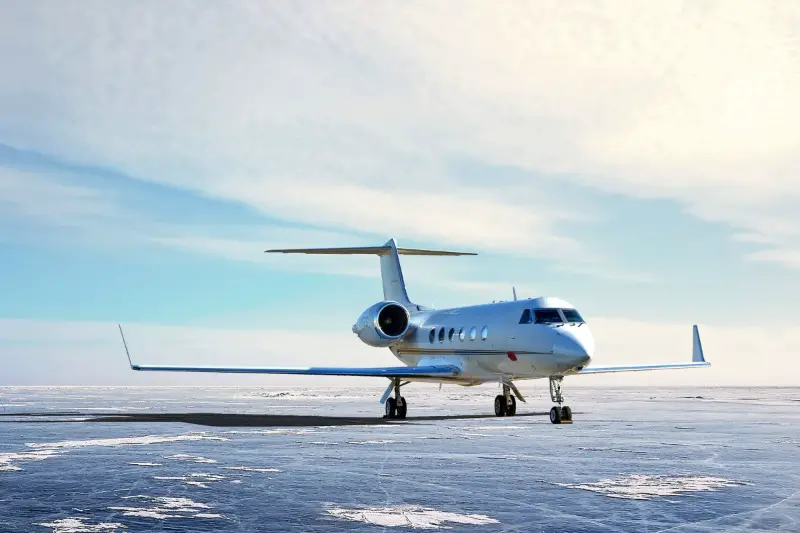
Knowing the Crew: Skilled and Family-Oriented Members
Crew members are the backbone of any private jet company.
They are highly skilled and experienced professionals who undergo rigorous training and certification programs to ensure the safety of their clients.
Private jet companies prioritize the safety of their crew members by providing them with a family-oriented work environment, which translates to better service for clients.
The crew management and scheduling process is carefully planned to ensure that crew members are well-rested and able to perform at their best during flights.
Private jet operators have a strong track record of safety, with many companies boasting zero accidents or incidents in their history.
This fact highlights the importance of having a well-trained team on board.
Private jet companies understand that crew members are people who are passionate about their job and committed to providing the best possible experience for their clients.
They recognize that happy employees lead to happy customers, which is why they place such an emphasis on creating a positive work environment for their staff.
In addition, private jet companies provide extensive training programs for their crews. These programs cover everything from emergency procedures to customer service skills.
As a result, crew members are equipped with the knowledge they need to handle any situation that may arise during a flight.
Also see: Aviation Psychologist
Private Jets Provide a Safer and More Secure Travel Experience
Private jets are equipped with advanced safety features that exceed the standards of commercial airlines.
These features include state-of-the-art avionics, enhanced weather radar systems, and advanced navigation technology.
Private jet charter companies invest heavily in the latest safety equipment to ensure their passengers’ safety during flights.
Furthermore, private jets undergo regular maintenance checks to ensure all systems are functioning correctly.
These checks are carried out by highly skilled technicians who specialize in private aircraft maintenance. This attention to detail ensures that every flight is as safe as possible.
Rigorous Training and Extensive Experience of Pilots
Private jet pilots undergo rigorous training and have extensive experience, ensuring a high level of safety during flights.
They must meet strict requirements set by aviation authorities before they can fly private jets commercially.
Pilots must complete thousands of hours of flight time before they can become certified to fly a private jet.
They also undergo regular training to keep their skills up-to-date and learn about new technologies that improve flight safety.
Adherence To Strict Safety Regulations
Private jet charter companies adhere to strict safety regulations set by aviation authorities, providing a safe and secure travel experience for their passengers.
These regulations cover everything from pilot training requirements to aircraft maintenance standards.
Additionally, private jet companies follow strict security protocols designed to prevent unauthorized access to their planes.
This includes background checks on all passengers and crew members before boarding the plane.
Greater Control Over Who Is On Board
One significant advantage of flying on a private jet is greater control over who is on board, reducing the risk of exposure to illness or security threats.
Passengers have more control over who they travel with, allowing them to avoid crowded commercial airports where they may be exposed to viruses or other health hazards.
More Direct Routes And Avoidance Of Crowded Airports
Private aviation allows for more direct routes and avoids crowded airports, reducing the risk of exposure to viruses or other health hazards.
This is because private jets can fly into smaller airports that are less crowded and closer to their final destination.
The Private Jet Industry Has A Strong Safety Record
Finally, the private jet industry has a strong safety record, with a lower accident rate compared to commercial carriers like British Airways.
According to the National Business Aviation Association, private jets have an accident rate of just 1.82 accidents per million flight hours, compared to 3.84 for general aviation and 6.02 for scheduled air carriers.

Emergency Preparedness in Private Jet Travel: Protocols and Procedures
Private jets are subject to regulatory requirements by the Federal Aviation Administration (FAA) in the United States and similar agencies in other countries.
These regulations ensure that private jets undergo regular inspections and maintenance to meet safety standards.
The FAA has specific guidelines for each type of aircraft, which private jet owners and operators must adhere to. In addition to these regulatory requirements.
Many private jet operators choose to participate in voluntary safety programs such as the International Standard for Business Aircraft Operations (IS-BAO).
This program provides a framework for best practices in aviation safety management systems.
By participating in this program, private jet operators can demonstrate their commitment to safety and improve their overall safety performance.
Recommended Maintenance Practices for Private Jets
Private jet manufacturers provide recommended maintenance schedules and procedures to ensure optimal safety and performance.
These recommendations include regular inspections, routine maintenance tasks.
And more comprehensive checks at specified intervals. By following these guidelines, private jet owners and operators can help prevent potential issues before they become major problems.
Passenger Resources for Researching Private Jet Safety
Passengers have access to resources such as the FAA’s Safety Performance Analysis System (SPAS) database to research the safety records and maintenance practices of private jet operators before booking a flight.
This database provides information on accidents, incidents, enforcement actions, compliance issues, and more. In addition to researching an operator’s safety record before booking a flight.
Passengers can also ask questions about their operator’s maintenance practices directly.
A reputable operator should be willing to answer any questions related to their aircraft’s maintenance history or current status.
Also see: Do Private Jets Have Showers?
Assessing the Maintenance Standards for Private Jets: How are they regulated?
Private jets are often associated with luxury and convenience, but what many people don’t realize is that they undergo high-quality inspections to ensure safety at higher altitudes.
These inspections cover all aspects of the aircraft, including engines, avionics, and structural integrity.
Flying at higher altitudes requires a higher level of quality in maintenance and inspection due to increased risks and potential hazards.
Ensuring Safety at Higher Altitudes
Private jet operators prioritize safety and invest in regular inspections to maintain the highest quality standards for their aircraft.
The Federal Aviation Administration (FAA) regulates private jet maintenance standards in the United States.
The FAA has strict guidelines for maintenance schedules, inspection intervals, and repair procedures that private jet operators must follow.
The FAA’s guidelines are designed to ensure that private jets are maintained to the highest standards of safety.
Private jet operators must adhere to these guidelines or risk losing their operating certificates.
In addition to FAA regulations, private jet manufacturers also have their own maintenance requirements that must be met.
Investing in Regular Inspections
Private jet owners understand the importance of investing in regular inspections to keep their aircraft safe and reliable.
These inspections can range from simple visual checks to more complex tests such as engine compression checks or structural integrity tests.
During an inspection, mechanics will check all critical components of the aircraft such as brakes, tires, hydraulic systems, fuel systems, electrical systems, avionics systems, and more.
Any issues found during an inspection will be addressed immediately before the aircraft is cleared for flight.
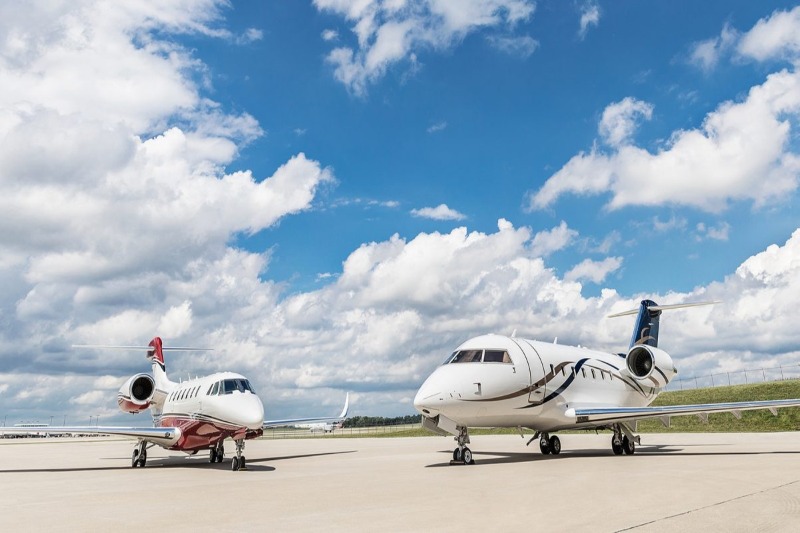
The Top Safety Features Found in Modern Private Jets
Commercial airlines have a much higher safety record than private jets. Private jets may seem like the ultimate luxury, but they simply cannot compete with commercial airlines.
According to data from the National Transportation Safety Board (NTSB), private planes are involved in accidents at a rate that is seven times higher than commercial airliners.
This is largely due to the fact that private jets are not subject to the same rigorous safety regulations and maintenance requirements as their commercial counterparts.
While many people assume that private jets are safer because they are smaller and more exclusive, this is simply not the case.
In fact, smaller planes are often more vulnerable to weather conditions and other hazards that larger aircraft can easily avoid or navigate around.
Additionally, private planes typically do not have the same level of onboard safety features as commercial airliners, which can make them more susceptible to accidents.
Commercial planes undergo rigorous maintenance and inspection procedures that private jets may not have to adhere to.
One of the key reasons why commercial airlines are so much safer than private jets is because they must adhere to strict maintenance and inspection procedures.
These regulations are put in place by governing bodies such as the Federal Aviation Administration (FAA) and require airlines to perform regular checks on everything from engines and landing gear to avionics systems and emergency equipment.
In contrast, private jet owners may be able to skip some of these inspections or perform them less frequently due to laxer regulations for general aviation aircraft.
While this may save time and money in the short term, it can ultimately put passengers at risk if critical components fail during flight.
Commercial aircraft are required to follow strict safety regulations set by governing bodies such as the Federal Aviation Administration (FAA).
Another key factor that contributes to the superior safety record of commercial airlines is their adherence to strict safety regulations set forth by governing bodies such as the FAA.
These regulations cover everything from pilot training requirements and crew rest periods to emergency response protocols and aircraft design standards.
In contrast, private jets are subject to much looser regulations, which can vary from state to state or even from airport to airport.
This means that the safety standards for private planes may not be as consistent or stringent as those for commercial airlines, which can increase the risk of accidents and other safety incidents.
The pilots of commercial airlines go through extensive training and certification processes, ensuring they are equipped to handle any potential safety issues during commercial air travel.
Perhaps one of the most important factors that contribute to the safety of commercial airlines is the extensive training and certification processes that pilots must undergo.
Commercial airline pilots typically have thousands of hours of flight experience under their belts and must meet strict requirements for training, education, and medical fitness before they can fly passengers.
This level of expertise is simply not required for private jet pilots, who may only need a fraction of the training and experience in order to obtain a license.
While this may make it easier for private jet owners to find qualified pilots.
It also means that these pilots may not be as well-equipped to handle unexpected safety issues or emergencies during flight.
Also see: Is Aviation A Good Career?
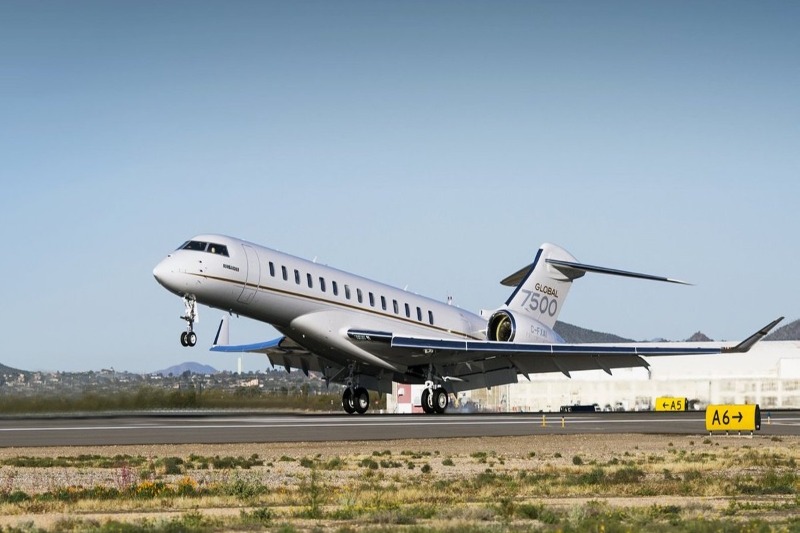
FAQ
1. How safe are private jets compared to commercial airliners?
This question seeks to understand the safety comparison between private jets and commercial airliners. Private jets, like commercial airliners, are subject to stringent safety regulations and standards.
2. What safety measures are in place for private jet travel?
This question aims to explore the safety measures implemented in private jet travel. Private jet operators prioritize safety by conducting thorough maintenance checks on their aircraft, employing trained and experienced pilots, and adhering to aviation regulations.
3. Are private jet pilots subject to the same safety regulations as commercial airline pilots?
This question addresses the regulatory framework for private jet pilots. While private jet pilots are required to meet specific qualifications and certifications, they generally follow similar safety regulations as commercial airline pilots.
4. Are private jets more prone to accidents or incidents?
This question explores the relative accident/incident rates of private jets compared to other forms of air travel.
Private jets, similar to any aircraft, can be involved in accidents or incidents; however, statistically, they have a lower accident rate compared to general aviation aircraft.
5. What is the safety record of private jet travel?
This question seeks information about the historical safety performance of private jet travel. Private jet travel generally maintains a good safety record. However, it is essential to recognize that safety can vary between operators and individual incidents can occur.
Also see: Do Small Private Jets have Bathrooms?
Conclusion
In conclusion, private jets are safe with proper safety measures in place.
From pilot training and certification to third-party safety checks and emergency preparedness protocols, the private jet industry takes safety seriously.
Private jets offer advantages such as fewer passengers, lighter flights, and flying above the weather conditions, making it a safer option for travel.
Modern private jets come equipped with top-notch safety features such as advanced avionics systems, automated flight controls, and high-quality inspections to ensure safe travel at higher altitudes.
Technology also plays a significant role in enhancing safety in private jet aviation.
It’s important to note that private jet companies adhere to strict maintenance standards regulated by aviation authorities.
The crew members are highly skilled and trained professionals who prioritize passenger safety over anything else.
While myths about private jet safety may exist, it’s essential to debunk them with facts based on research and expert opinions.
Private jets provide a secure travel experience for those who value privacy, convenience, and comfort without compromising on safety.
Also see: Private Airstrip
Other related articles
- Embraer Legacy 500 | Long Range Flyer
- Private Jet Maintenance | How Often Is Maintenance Required?
- Can You Smoke On A Private Jet? | Unveiling the Luxury
- How To Own A Private jet | The Guide to Safe Luxury Travel
- Private Jet Lifespan | Essential Maintenance and Upkeep Tips
- Private Jet Partial Ownership | The Next Big Thing in Travel
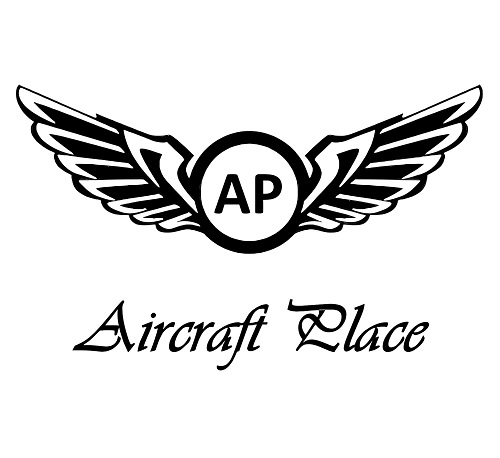
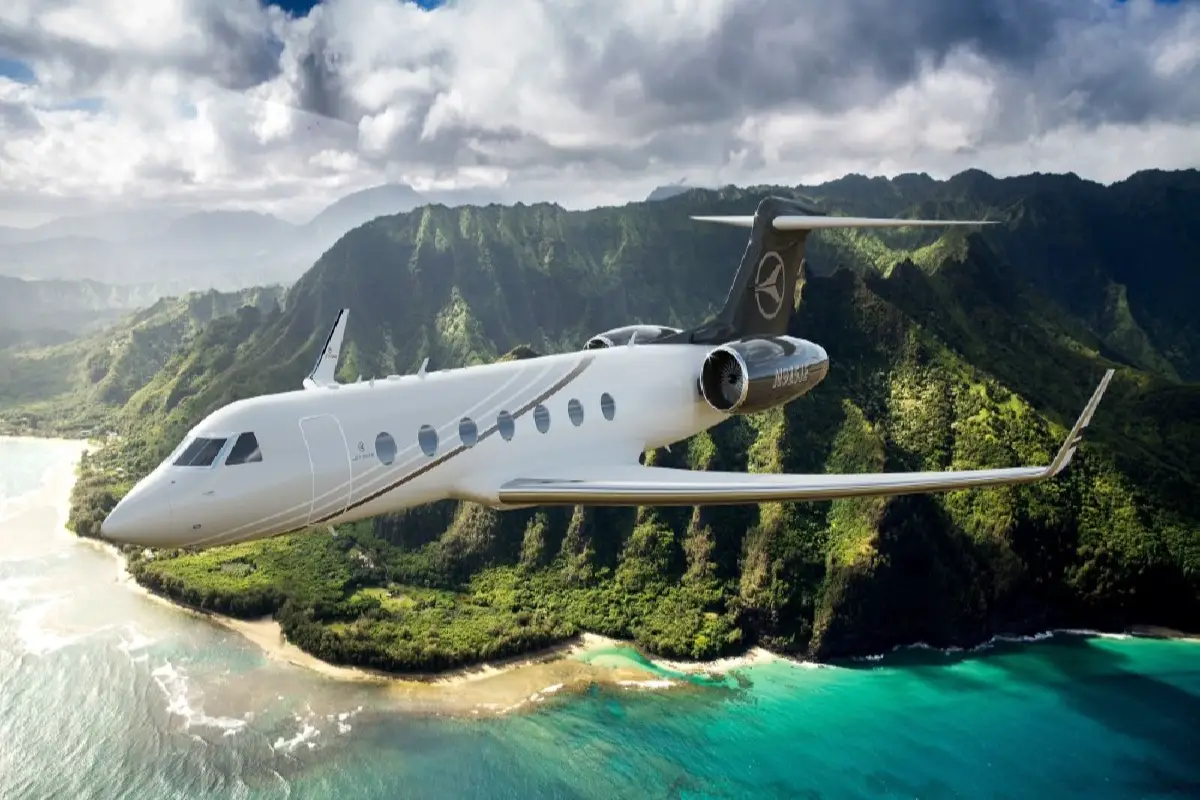




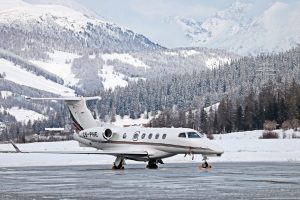
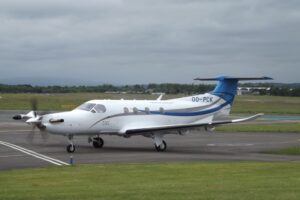




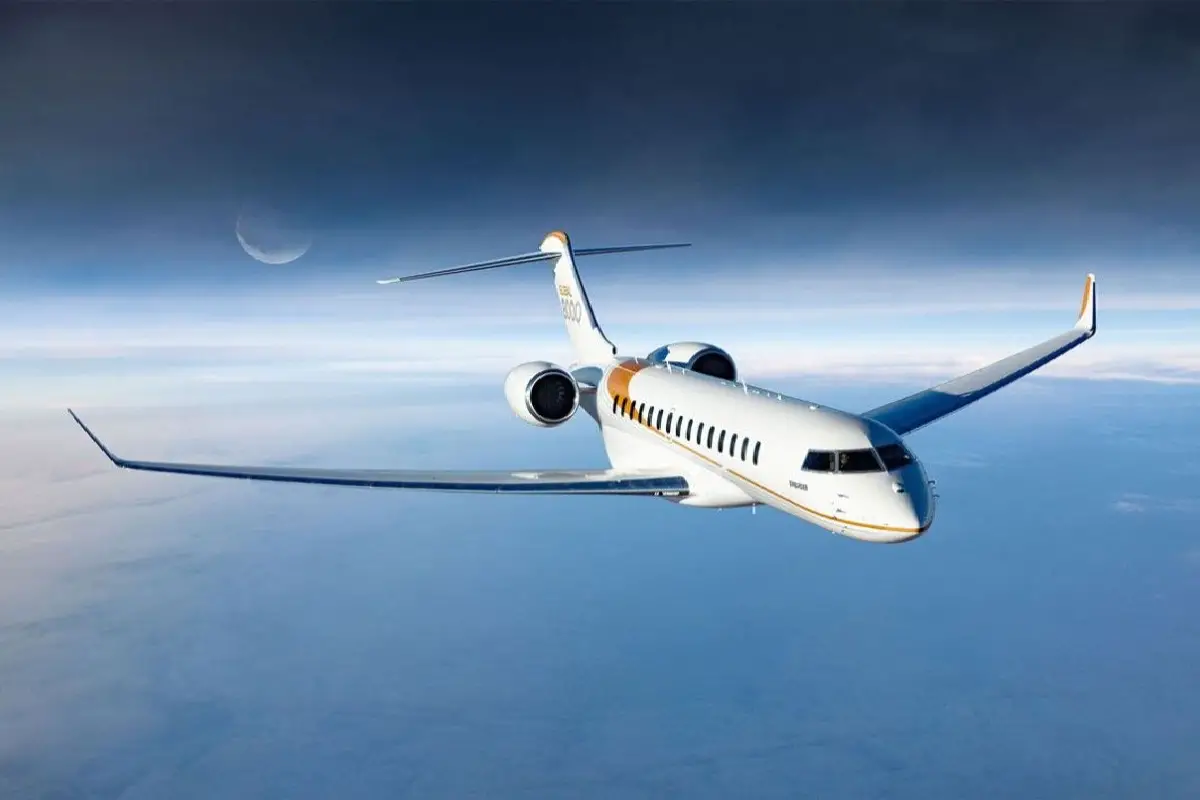
Leave a Reply